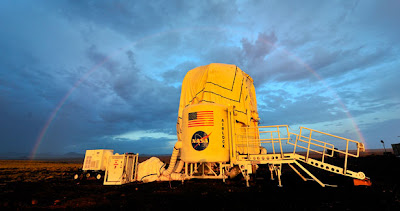
Despite recent cuts to its manned space program, NASA continues to research ways that astronauts might live safely in space during prolonged missions. The agency recently completed tests of a prototype astronaut habitation unit in the rugged, barren, almost-Martian landscape of the Arizona desert. The habitat could be tested in space within a decade, and might one day serve as a home away from home for astronauts on the moon or Mars.
The tests, completed last month, included sending in crews for overnight stays, and running simulations of work that would be done in a single day.
The current prototype housing unit has a hard cylindrical shell, contains four rooms, two outside additions for dust mitigation and hygiene, and an inflatable component that adds a second level for sleeping and relaxing.
The inflatable loft design was part of a university competition called XHab. The researchers explain that a final design could be fully inflated, or could have a small hard shell inside an inflated exterior. Hard shells, while heavier to transport, are better at blocking dangerous radiation from space.
Inflatable space habitats have been a popular idea since the 1970s, but the new project is the most advanced to date. Inflatable units are a typical option because they offer a lot of volume for the weight of materials, so the cost of getting the housing to space is lower.
The team also tested a prototype robot that could explore the surface of Mars and be controlled by an astronaut from inside the habitation.
Read More
The tests, completed last month, included sending in crews for overnight stays, and running simulations of work that would be done in a single day.
The current prototype housing unit has a hard cylindrical shell, contains four rooms, two outside additions for dust mitigation and hygiene, and an inflatable component that adds a second level for sleeping and relaxing.
The inflatable loft design was part of a university competition called XHab. The researchers explain that a final design could be fully inflated, or could have a small hard shell inside an inflated exterior. Hard shells, while heavier to transport, are better at blocking dangerous radiation from space.
Inflatable space habitats have been a popular idea since the 1970s, but the new project is the most advanced to date. Inflatable units are a typical option because they offer a lot of volume for the weight of materials, so the cost of getting the housing to space is lower.
The team also tested a prototype robot that could explore the surface of Mars and be controlled by an astronaut from inside the habitation.
Read More
No comments:
Post a Comment